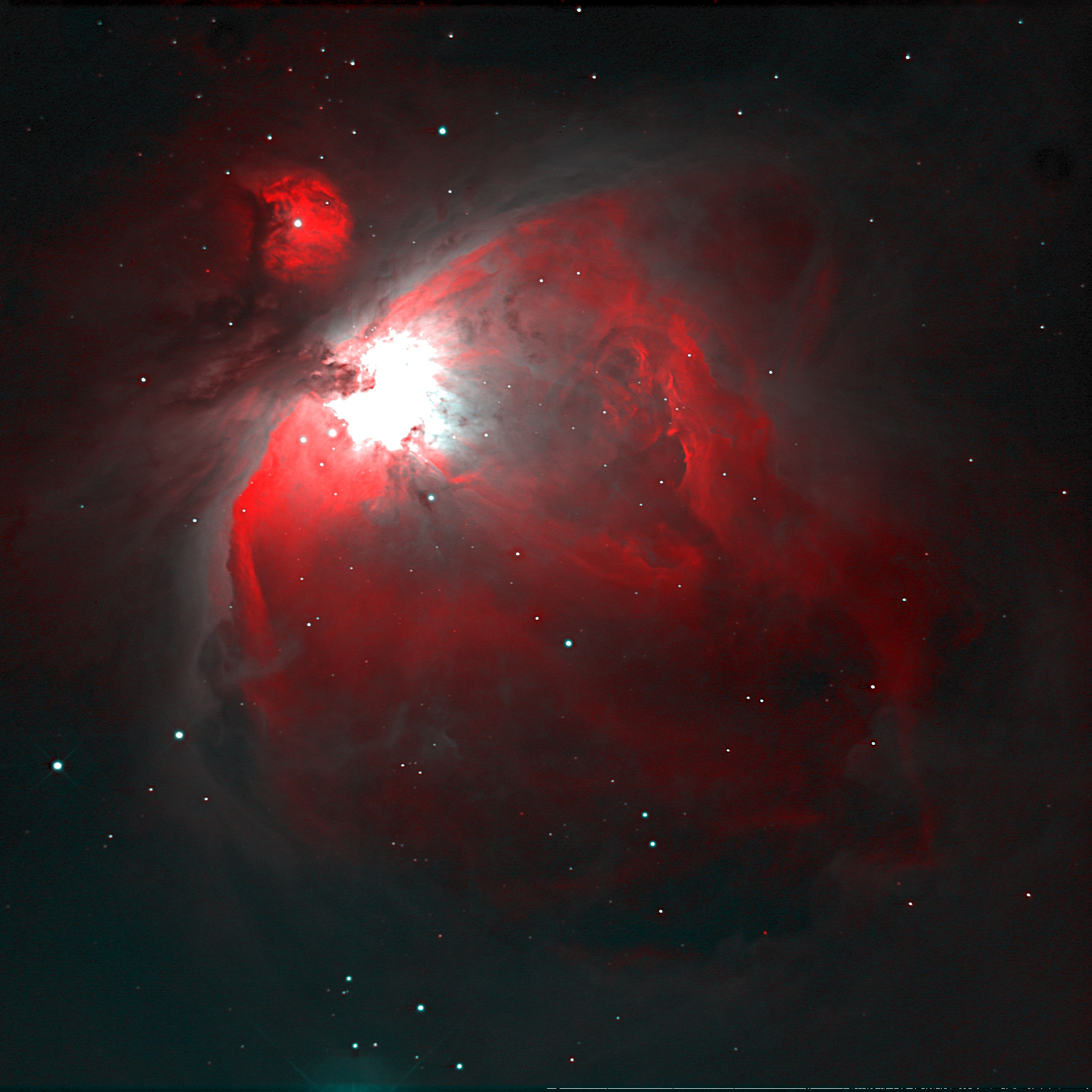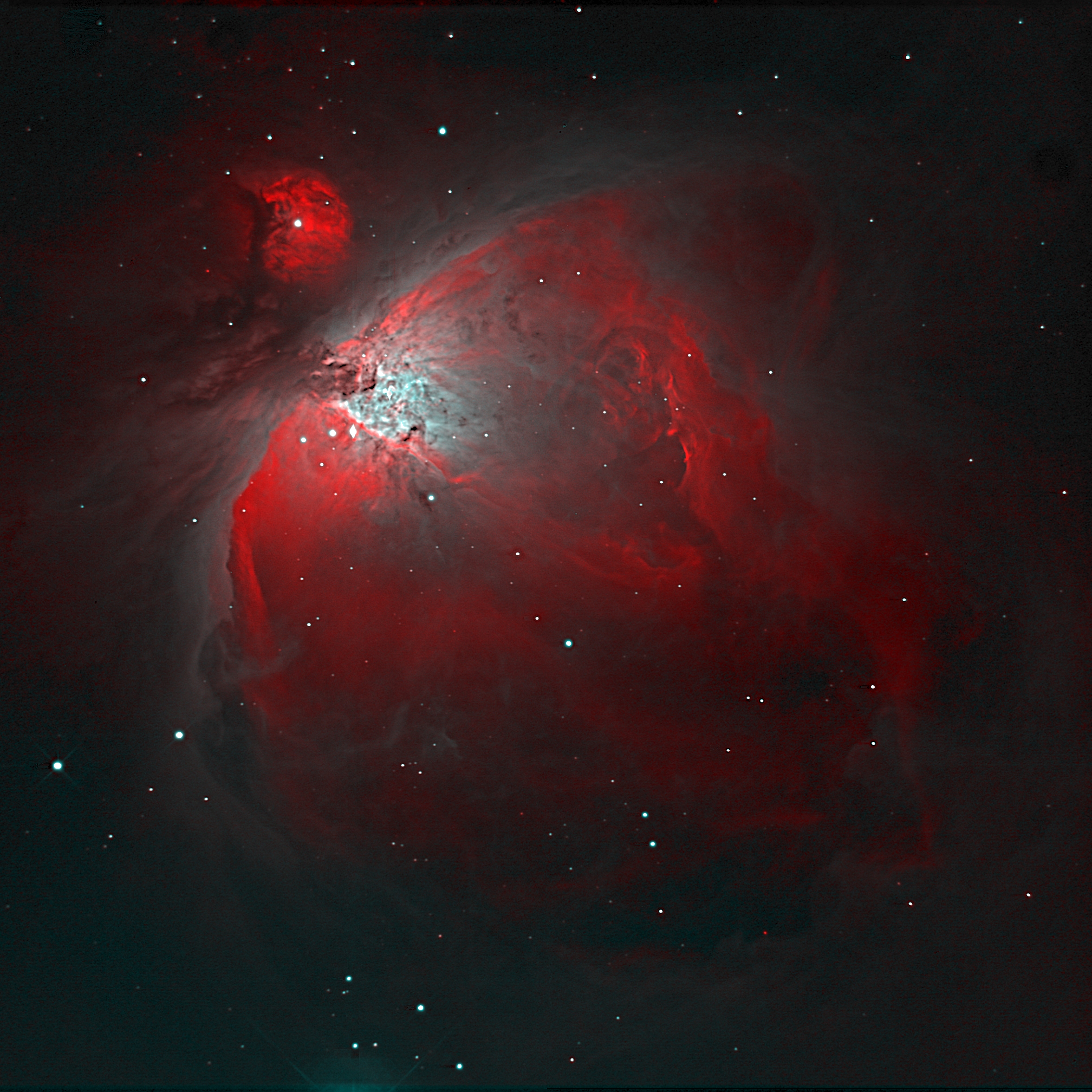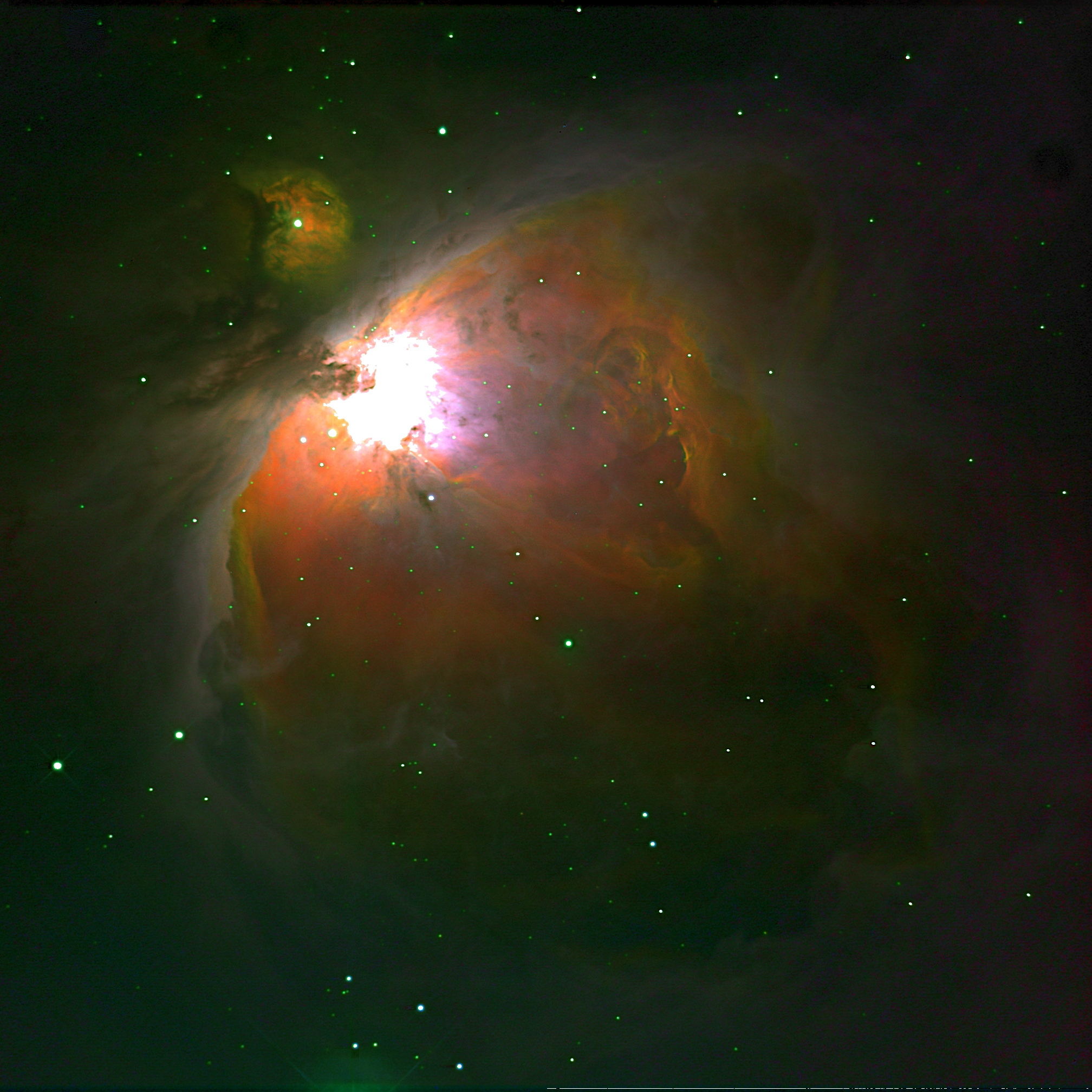|
M42 imaged with SII, H-alpha and OIII narrow-band filters (Baader Planetarium, 6.5-8.5nm bandwidth), shown in three different ways. To the left H-alpha is shown in Red while the OIII image is distributed over Green (100%) and Blue (100%). The eye-sensitivity for the H-alpha and OIII wavelengths has been taken into account favouring the blue/green OIII over the red H-alpha contribution. The middle image shows the same but was unsharp masked, i.e. the image was devided by a smoothed version of itself, lowering the intensity of the central part of the nebula and revealing the (nearly overexposed) trapezium star cluster. The image to the right shows M42 with H-alpha again assigned to Red (150%), S-II to Green (400%) and OIII to G (80%) and B (100%). The intensity of the S-II image is much weaker than those of the H-alpha and/or OIII images and, in order to have a more noticeable S-II contribution, it has been enhanced by a factor of four. Images are obtained on february 8, 2023, with the FTT1010-M CCD camera and my latest f/D=3.5 Newton configuration (see bottom line for details). M42 is a relatively bright object and for H-alpha and OIII short, 60-second exposures were needed to avoid overexposure of the central part: H-alpha 19x60 seconds, OIII 30x60seconds. The Sulfur contribution is weaker and 16 exposures of 120 seconds were acquired. The images cover a 0.8x0.8 degree field of view, are sharpened and shown with a gamma of 2.2. The luminance is based on the (photopic) eye sensitivity for the H-alpha wavelength (656nm: sensitivity 0.08) and OIII wavelength (501nm: sensitivity 0.34). Thus L=0.08*H-alpha+0.34*OIII. |
 |
 |
 |
The f/D=3.5 Newton configuration is in fact a modified Cassegrain telescope with a 25cm, f=1091mm primary. By adding a plane-convex lens close to the CCD the effective focal length is reduced to f=880mm and the f/D is improved from 4.3 to 3.5. Without this lens, coma of the parabolic primary over the 12mmx12mm focal plane of the CCD is substantial. The plano-convex lens reduces coma and increases sensitivity by some 50% (which compensates for the relatively low quantum efficiency of the CCD's I'm (still) using). For more details refer to the equipment page on telescopes and a description of the simple coma-reducer. |